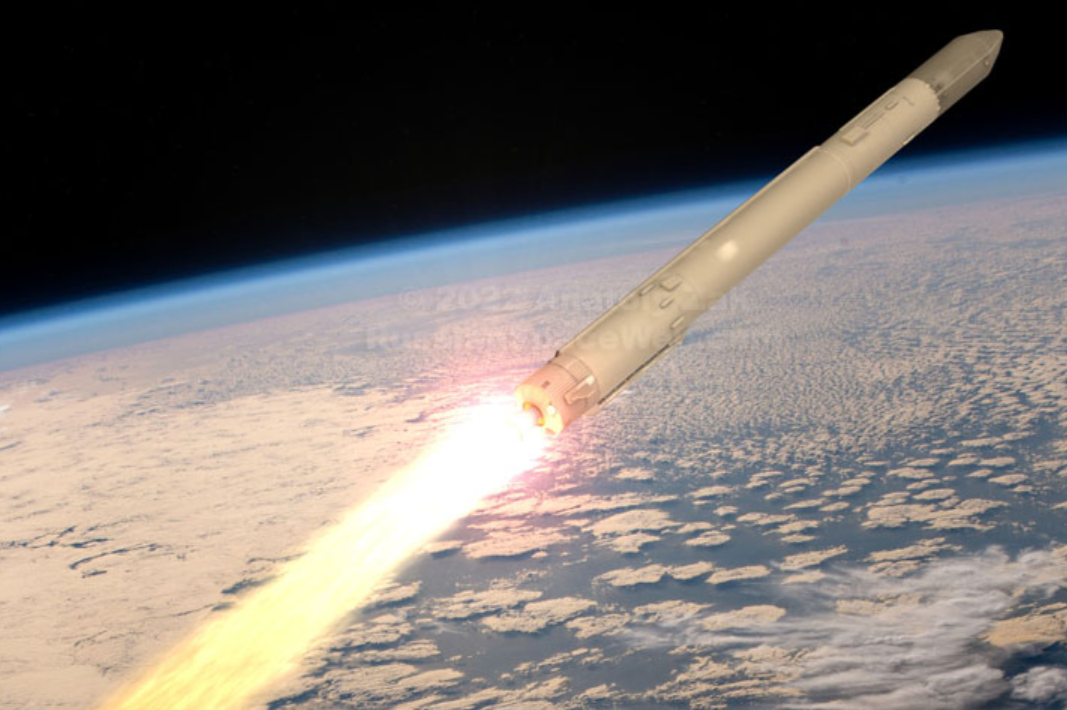Angara 1.2 rocket completes its maiden flight into orbit
The Russian Angara 1.2 carrier rocket conducted its first orbital launch on April 29th at the Plesetsk Cosmodrome, carrying a military small rocketsatelliteLaunch into orbit. The rocket ignited and took off at 22:55 Moscow time (3:55 Beijing time on April 30th). Launch aiming at the sun synchronous orbit.
The Angara series was developed by the Khrushchev National Research and Production Space Center and was the first carrier rocket completely developed and produced by Russia from scratch after the dissolution of the former Soviet Union. All other Russian rockets are based on models from the Soviet era. Russia plans to use this series as the main rocket for its future space program, replacing old models such as the Proton, to launch various payloads into various orbits. This series will be launched from the Plesetsk Cosmodrome in northern Russia and the newly built Vostok Spaceport in the Russian Far East, without relying on the Baikonur Cosmodrome located in Kazakhstan. Due to being launched domestically and all components of the rocket being manufactured domestically, coupled with the fact that each segment is either at sea or within the country, the "Angara" series will enhance Russia's autonomy in space activities.
The "Angara" series adopts a modular design, forming light, medium, and heavy models through combination. The modules used in the first two stages (bundled stage/first stage+core first stage/second stage) and the third stage/core second stage are respectively referred to as "Universal Rocket Module" (URM) 1 and 2. URM-1 uses the RD-191 single chamber liquid oxygen/kerosene engine produced by the Power Machinery Research and Production Joint Company, with a sea level thrust of approximately 1920 kN. This engine is derived from the RD-171 four chamber engine used in the Zenith rocket and the RD-180 two chamber engine used in the American Atlas 5 rocket. The URM-2 uses the RD-0124A liquid oxygen/kerosene engine, which is an improved version of the engine used in the second stage of the Soyuz 2-1b rocket, with a thrust of approximately 293 kilonewtons. In addition, due to the use of environmentally friendly propellants, this series of rockets helps to solve the environmental and ecological safety issues caused by the use of toxic fuel rockets around the launch site and in various landing areas.
The Angara series includes the light Angara 1.2, medium Angara A3, heavy Angara A5 (upgraded to Angara A5M), and the largest carrying capacity Angara A5V. In July 2014, the "Angara" 1.2PP model was specially designed for its maiden flightrocketThe first suborbital test flight of this series of rockets was conducted in Plesetsk.
The first stage of the Angara 1.2 model uses one URM-1 module, and the second stage is derived from the second stage of the Soyuz rocket, with a diameter of 2.9 meters (the same as the first stage), which is lower in diameter and propellant filling than the URM-2 module used in other models. The larger Angara A3 uses three URM-1 modules side by side, with two bundled modules serving as the first level, one core module serving as the second level, and one URM-2 module used as the third level. The larger Angara A5 uses 5 URM-1 modules in groups, with 4 bundled modules serving as the first level, 1 core module serving as the second level, and 1 URM-2 module still used for the third level. Angara A3 and A5 can also be equipped with the "Hefeng" M upper stage used for proton missions, the higher performance KVTK hydrogen oxygen upper stage under research, and the "Perseus" liquid oxygen/kerosene upper stage for launching geostationary orbit satellites.
The Angara A5 has undergone three test launches. The first test launch in December 2014 was a simulated geostationary orbit satellite weighing approximately 2040 kilograms, called IPM. The second test flight was originally scheduled to take place in 2016, with the intention of carrying a practical satellite for the first time. However, due to issues with the rocket manufacturer, the launch was delayed and had to be changed to carrying a simulated satellite, IPM-2, weighing approximately 2400 kilograms. The test flight was finally conducted in December 2020.
Unlike the previous two test launches that used the "Hefeng" M-type upper stage, the third test conducted in December last year adopted the "Perseus" liquid oxygen/kerosene upper stage modified from the old model DM03 group stage. It is planned to send the 2400 kilogram IPN-1 simulation star into a near geostationary orbit. Due to issues with the upper level, the test launch ultimately ended in failure. According to reports, Russia originally planned to put the "Angara" series into practical use after that test launch, and planned to arrange three launches this year, including two "Angara" 1.2 launches and one "Angara" A5 launch.
Rogozin, the General Manager of the Russian Aerospace State Corporation, previously stated that due to its performance being roughly equivalent to the medium-sized Soyuz 5 rocket, there may be no need to develop the Angara A3 rocket again.
The small satellite launched this time is numbered "Universe" 2555. There are reports that the star code name is MKA-R-1 and it is a military oneradarSatellite (MKA stands for "small satellite", R stands for "radar"). There are also reports that the satellite may be related to the "Experimental Small Satellite" (EMKA) photographic reconnaissance satellite series or its practical model "Razbeg", codenamed EMKA-3.
